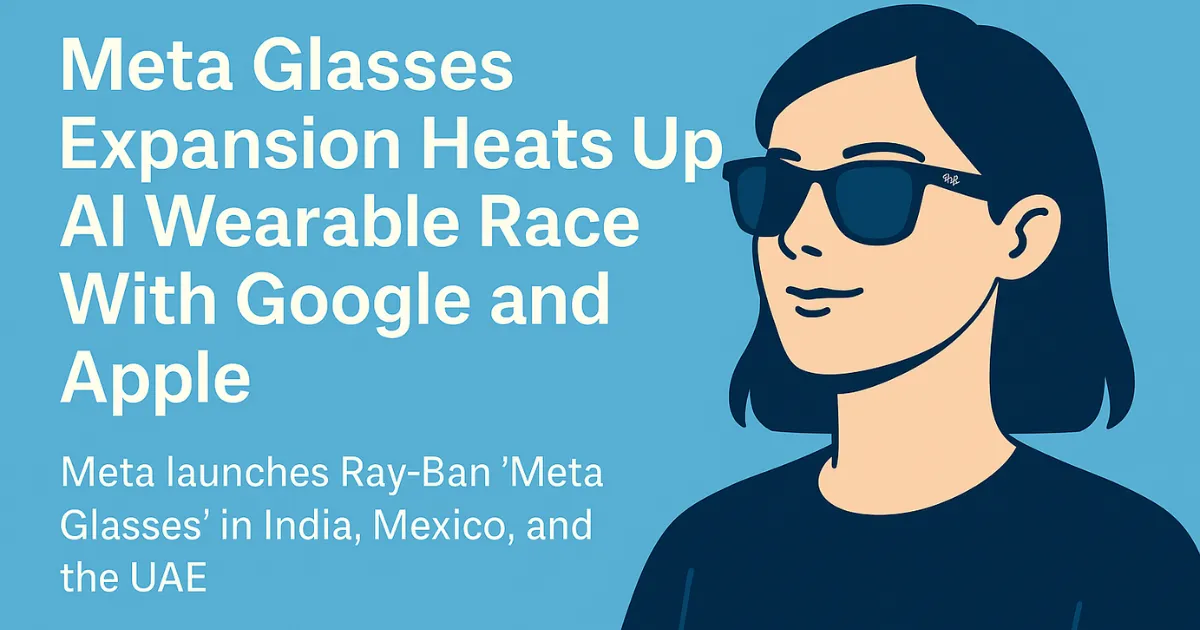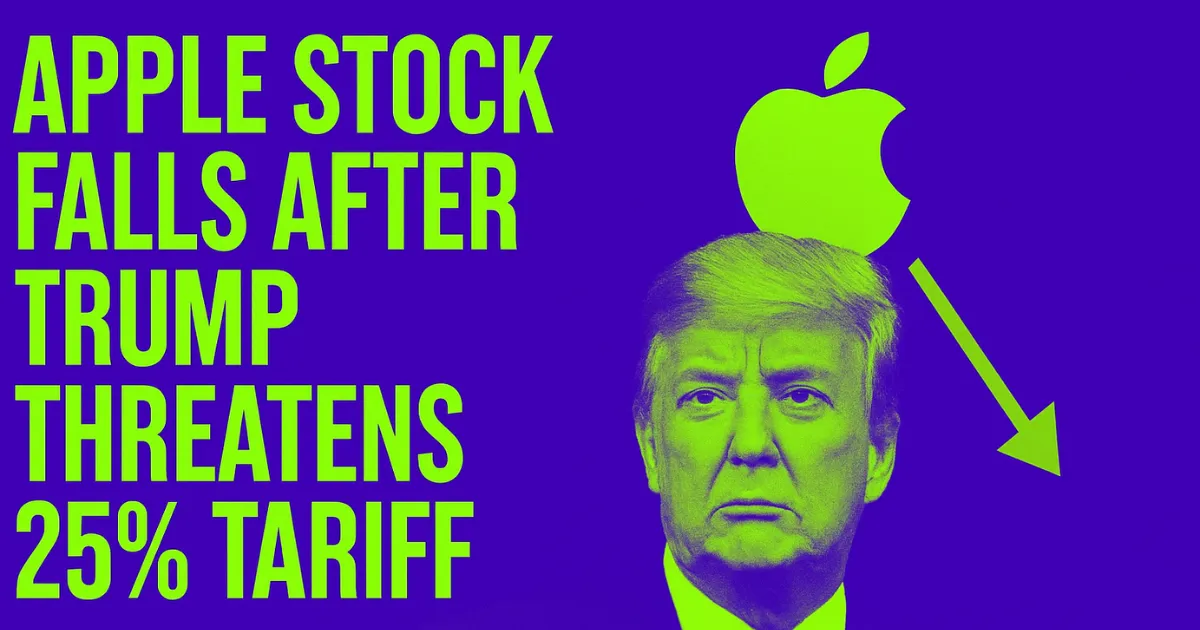Meta Glasses Expansion Heats Up AI Wearable Race With Google and Apple

Ray-Ban and Meta glasses push just got a major boost: Meta launched its Ray-Ban AI glasses in India, Mexico, and the UAE, dramatically expanding its footprint. The move nearly triples the product’s market reach by tapping India’s vast population of over 1.4 billion..
These glasses now include Meta’s live AI features (like real-time translation and music ID, which were rolled out in December, and Meta has even begun marketing them as AI Glasses. In short, Meta is aggressively seeding the market with chic, AI-powered eyewear while competitors are still gestating their own devices.
Meta Glasses Features
Ray-Ban | Meta glasses are essentially smart sunglasses with no visible screen. They carry a built-in camera, microphones, and open-ear speakers. You can capture photos or videos and make voice calls on them, even sharing a first-person view on WhatsApp/Messenger calls.
Critically, they tap Meta AI as a hands-free assistant: you say “Hey Meta,” and the Meta glasses, literally seeing what you see, can answer questions or translate speech in real time. For example, the live translation feature (announced at Meta Connect 2024) lets wearers speak with someone in another language and hear instant voice translation through the glasses. Other AI tricks like Shazam song recognition and visual search are also active.
Importantly, Meta’s Ray-Ban frames look like fashion sunglasses. They come in Wayfarer, Headliner, and Skyler designs with clear, sun or polarized lenses. By partnering with EssilorLuxottica (Ray-Ban’s owner), Meta can sell a product that feels and fits like premium eyewear while delivering novel tech.
As Mark Zuckerberg notes, augmented reality glasses could become “the ideal device for an AI assistant” because users can “see what you see and hear what you hear”. Meta is banking on that vision: the new Meta glasses are as much a style statement as a gadget, with features like video calling via Instagram/WhatsApp and expanded battery life. In practice, they work quietly – there’s no AR overlay, just voice and camera – but the continuous AI experience is what Meta emphasizes.
Ray-Ban Meta Glasses Price
The Ray-Ban Meta glasses start at roughly $299 in the US and Europe (with premium frames or lenses costing more). In India, where they just launched, the base model retails around ₹30,000, on the order of the average annual salary for many Indians. UploadVR notes that this makes them “unaffordable for the vast majority” of the population, even as a growing middle class hovers on the horizon. Mexico and the UAE will have similar pricing tiers (several thousand in local currency), placing them well out of reach for casual buyers.
For Meta, the high price is a trade-off: it means only well-heeled tech enthusiasts will buy them now, but it also positions the device as a premium “cool” product. Early market leaders often sell into the high end before costs can come down.
Meta’s strategy appears twofold: use striking Ray-Ban designs to attract trendsetters, and expand retail availability (physically and online) to build familiarity. In Europe, for example, Ray-Ban Meta glasses became the top-selling glasses brand in 60% of Ray-Ban stores. Meta is essentially leveraging EssilorLuxottica’s existing distribution and fashion credibility to establish these AR/AI glasses as a must-have accessory.
While price limits short-term sales in populous countries, the expansion is significant for branding. Meta’s Reality Labs has even exceeded some sales projections thanks to the Ray-Ban glasses debuting with new AI features in December.
Meanwhile, in its latest Meta earnings report, it disclosed that Reality Labs (its AR/VR unit) booked another $3.85 billion operating loss in Q1 2024, even as that division’s revenue grew 30% year-over-year (to $440 million). This underscores Meta’s willingness to invest heavily, essentially subsidizing the early market, in order to gain a foothold in the coming AR/VR landscape.
Conclusion
Across the industry, rivals are moving fast. Apple’s Vision Pro headset is already on the market as a high-end mixed reality device, and Snap has released a new version of its Spectacles AR glasses. Google, not to be left behind, is partnering with fashionable eyewear brands (Gentle Monster and Warby Parker) on Android XR smart glasses shown off at Google I/O 2025.
These Google prototypes include cameras, speakers, and even optional display lenses, hinting at future AR HUDs. Each tech giant is pursuing its own angle – Apple with an all-in-one headset, Snap with limited-edition smart sunglasses, and Google with Android-powered designs – but the goal is the same: to win first-mover mindshare in next-gen wearables.
Meta’s clear-eyed approach is to use distribution and design as its wedge. By nearly tripling the countries where Ray-Ban AI glasses are sold, Meta boots competitors off the launch line. By wrapping AI features into iconic Ray-Bans it makes the tech feel mainstream-chic. Ultimately, while Google, Apple, and Snap race to refine their hardware, Meta is racing for retail space and cultural cachet. With its broad reach and Ray-Ban cool factor, Meta aims to lead the AI glasses segment from the front – a strategic early advantage in the unfolding augmented reality war.
Sarah Zimmerman
Published on Other News Site



















